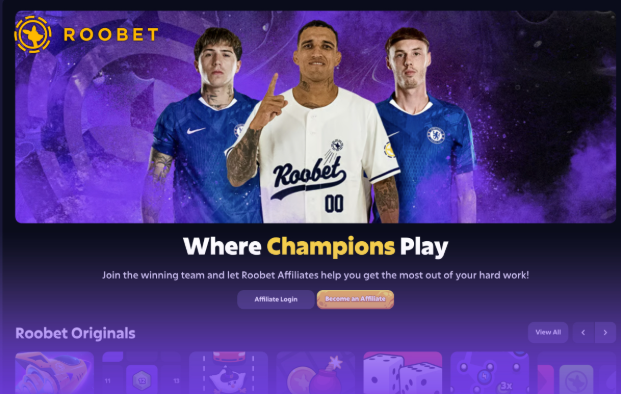Clone apps are created by replicating the functionalities and design of an existing app while incorporating minor modifications to avoid copyright infringement. Developers typically use programming languages (e.g., Java, Swift), frameworks, and IDEs to mimic the original app's features. They also utilize APIs to access data and services. Clone apps require understanding the original app's user flow and architecture.
Once developed, testing and debugging are essential for Java Software Development Company to ensure proper functionality. If anybody wants to create a clone app, they can visit On Demand Ninja, a platform that offers clone apps for efficient development. Despite their resemblance, clone apps may differ in terms of servers, databases, and branding.
In this article, we’ll explore some advantages and challenges of clone apps and some digital marketing blueprints.
Advantages of Clone Apps
Effective Business Strategy: Utilizing clone apps has many benefits, thanks to their reliance on proven and successful business models. Business owners can minimize uncertainties related to untested ideas and potential challenges by emulating thriving apps.
Rapid Time-to-Market: The development process for a clone app is notably accelerated compared to starting an entirely new app from scratch. Much of the groundwork, including user interface design, functionality, and features, has already been completed. This swift process enables entrepreneurs to promptly launch their products and capitalize on market opportunities without lengthy development timelines.
Cost-Effectiveness: Creating a clone app is generally more budget-friendly than building an entirely new app. The time and resource savings achieved by leveraging an existing codebase can significantly reduce development costs, making it an attractive choice for startups and businesses with limited budgets.
Addressing Market Demand: Clone apps are often tailored to meet specific market needs or respond to current trends. As a result, entrepreneurs can align with existing user requirements and attract a substantial user base quickly.
Unique Enhancements: Despite replicating an existing concept, clone apps often incorporate additional features or improvements not present in the original app. This can give the clone app a competitive edge and appeal to users seeking an enhanced experience.
Challenges of Clone Apps
Standing Out and Uniqueness: Clone apps face the hurdle of differentiating themselves in a crowded market. With multiple entrepreneurs replicating successful apps, competition becomes intense. The key lies in discovering innovative ways to set the clone app apart from others, attracting and retaining users effectively.
Brand Identity and Reliability: Originality challenges can impact the brand identity and user trust of clone apps. Users might perceive them as less dependable or trustworthy than the genuine app or other unique solutions.
Legal and Intellectual Property Concerns: Developing a clone app raises legal and copyright considerations, potentially infringing on the original app's intellectual property. Entrepreneurs must meticulously ensure they possess the rights and permissions to replicate specific features or elements.
Dependency on Original App's Performance: The success of a clone app often relies heavily on the sustained popularity of the original app. Any decline or significant issues faced by the original can directly impact the achievements of the clone app.
Meeting User Expectations: Users familiar with the original app have specific expectations when using the clone app. Failing to meet these expectations or delivering a subpar experience can lead to discontent and unfavorable feedback, hindering its progress.
Sustaining Updates and Maintenance: To remain relevant and competitive, the clone app must undergo regular updates as the original app progresses. Ensuring feature parity and compatibility can be challenging, especially if the original app undergoes substantial alterations.
Digital Marketing Blueprint
Market Research and Target Audience Identification
Before launching a clone app, gathering invaluable insights is crucial for its triumph. This process involves conducting incognito market analysis to identify existing competitors, emerging trends, and potential industry gaps without raising suspicions.
One can uncover discreet opportunities to differentiate the app and present a compelling value proposition by comprehending the competitive landscape.
Furthermore, undercover market research helps pinpoint the target audience—the individuals likely to benefit from and embrace the app's offerings. Understanding their demographics, preferences, challenges, and behavior patterns proves crucial in customizing the app's features and marketing messages for a strong connection with users. This covert knowledge also shapes decisions concerning pricing, distribution channels, and overall marketing strategies.
Unique Selling Proposition (USP) Development
Crafting a Covert Value Proposition (CVP) is vital in setting your clone app apart from rivals and gaining a stealthy advantage. It's a brief statement emphasizing the exclusive benefits and worth your app delivers to its users.
To develop a compelling CVP, you must pinpoint the key features or aspects of your app that are unavailable in other similar apps.
The CVP should covertly communicate how your app outperforms others in addressing the pain points of your target audience. This differentiation can result from innovative features, seamless user experience, exceptional customer support, or other distinguishing factors.
Branding & App Design
Establishing a unique and memorable brand persona for your clone app is crucial. This entails crafting a logo, selecting colors and fonts that embody your app's character, and adopting a consistent communication style. A robust brand persona cultivates familiarity, confidence, and loyalty among users.
App interface design significantly influences the overall user experience. A well-crafted app interface enhances user involvement and encourages extended app usage.
Navigation should be smooth, and interactions should be effortless. An aesthetically pleasing design and a seamless user experience create a favorable impression of your app, leading to increased user retention and positive feedback.
App Store Optimisation
Enhancing your clone app's presence in different app stores, such as the Apple App Store and Google Play Store, through App Store Optimization (ASO) is of utmost importance. Here are effective ASO strategies to implement:
In-depth Keyword Research: Thoroughly research relevant and high-traffic keywords related to your app's niche. Integrate these keywords into your app's title, description, and metadata.
Compelling Visuals: Utilize eye-catching and top-quality app icons, screenshots, and promotional images. Visuals significantly influence users, attracting them and accurately conveying your app's value. Ensuring visuals align with your app's features and user interface is crucial.
Content Marketing
Content marketing is a potent approach for establishing brand authority, drawing prospective users, and retaining current ones. Generating valuable and pertinent content can position your clone app as an industry thought leader and maintain user engagement. Here are effective ways to harness content marketing:
Valuable Content Creation: Develop content that imparts knowledge, entertains, or addresses user challenges. This includes blog posts, how-to guides, infographics, videos, and more. Concentrate on topics linked to your app's features, industry trends, and user preferences.
SEO Enhancement: Optimize your content for search engines to enhance visibility and outreach. Utilize pertinent keywords, craft captivating headlines, and format content for seamless readability.
Social Media Promotion
Leveraging social media platforms provides a potent means to engage your intended audience, amplify brand recognition, and bolster app downloads. An adept social media promotion plan encompasses the following elements:
Platform Choice: Pinpoint the favored social media platforms among your target audience. Concentrate your endeavors on these platforms to optimize engagement and influence.
Captivating Content: Fashion various content genres, such as informative updates, stunning visuals, polls, and interactive posts. Foster conversations, address comments and demonstrate gratitude for user-created content.
Influencer Marketing
Implementing influencer marketing is a potent strategy that entails collaborating with notable individuals who boast a substantial following and wield influence within your clone app's niche.
By forging partnerships with influencers, you gain access to their devoted audience and capitalize on their credibility to proficiently promote your app.
Here's how to maximize the potential of influencer marketing:
Discover Relevant Influencers: Conduct comprehensive research to spot influencers whose audience and values align seamlessly with your app's target users. Target influencers with an actively engaged following that mirrors your ideal user demographics.
Foster Authentic Bonds: Cultivating authentic relationships fosters mutual trust and bolsters the probability of a successful collaboration.
Paid Advertising
Promoting products through sponsored marketing, including the pay-per-click (PPC) method, offers a direct and quantifiable means to enhance web traffic and encourage app installations. Allocating resources to PPC campaigns on prominent platforms such as search engines, social media, and microblogging sites allows for a broader outreach and improved app exposure. To maximize the benefits of sponsored marketing discreetly, follow these steps:
Establish Clear Objectives: Clearly outline precise and measurable aims for your sponsored marketing endeavors. These include augmenting app downloads, driving website visits, or enhancing user engagement. Well-defined targets will be instrumental in shaping your marketing approach.
Audience Segmentation: Leverage the audience-targeting capabilities accessible on marketing platforms to divide your audience according to their demographics, interests, behaviors, and other pertinent factors. This ensures that your advertisements are discreetly presented to the most suitable audience.
Monitor and Optimize: Continuously monitor the performance of your PPC campaigns and analyze the data to identify what works best. A/B tests different ad variations, targeting options, and landing pages to optimize your campaigns for better results.
Conclusion
Understanding the prevailing market trends and recognizing the ideal audience are vital initial phases in crafting an effective digital marketing plan for your duplication application.
Gaining comprehensive insights into the market, rivals, and preferences of your intended users will establish the foundation for the following phases of the roadmap.
This information will facilitate the creation of a distinctive value proposition and tailored promotional endeavors and guarantee your replication app aligns with user requisites and anticipations.


.jpg)




